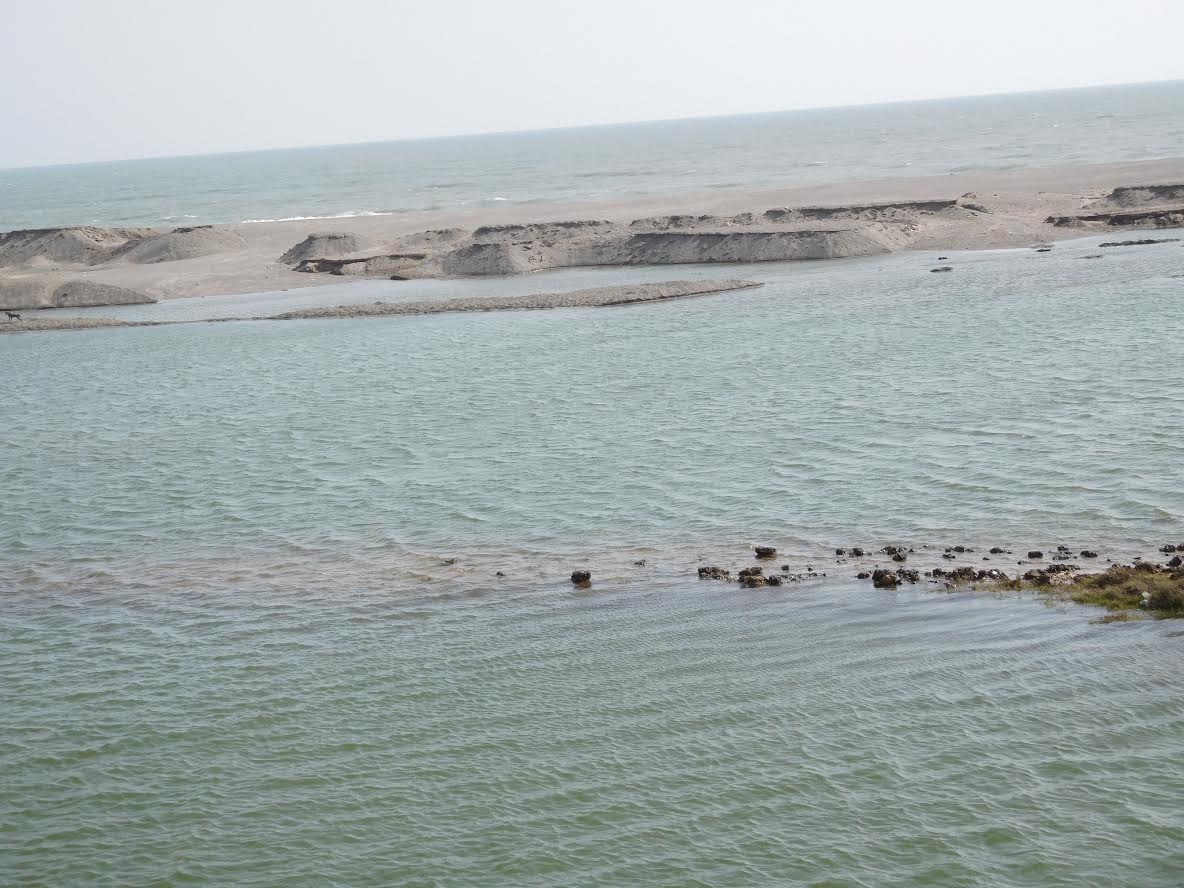
There was illegal mining in the Triveni Sangam and I could not believe my eyes. Who could do something like this? The sangam or confluence has a special place in my mind as I had grown up visiting this place regularly since childhood. Many families like mine have spent long hours in the area during festivals and recreational trips. But the sangam is not just a tourist or cultural attraction. It is a unique hydrological occurrence where three rivers--the Hiren, the Kapil and the Saraswati--are known to meet before they flow into the Arabian Sea.
Till about 10 years ago, this confluence was rich in biodiversity. A wide array of birds including flamingos perched on undulating sandbars in this coastal riverbed. It was a visual treat and a way of life for several of us growing up in rural areas of Gir Somnath district of Gujarat. 
But a year and a half ago, when I visited the place, it seemed unrecognisable. The place had changed and several locally powerful people were responsible for it. I was told that the local mafia was soaking up all the sand and destroying the diversity of the Triveni Sangam. The same place, which gave me utmost joy, was a reason for sadness. But I was not clear on how and when this had begun and what can be done about it.
An equally bigger question for me was whether this was just my nostalgia or was this extraction of sand creating problems for people living nearby?
Understanding the problem
It was in 2015 that I had begun working with the Centre for Policy Research (CPR) and Namati on their collaborative work to achieve environmental justice (EJ). Triveni Sangam was destined to be one of my first cases as part of this work. We were looking for impacts that people of the area were facing and understand if there was a violation of law involved. Further, if this violation were addressed, would the issue be solved?
As I began enquiring, it came to light that approximately 200 people, especially from the fishing community, were being directly impacted by this activity. Since large rocks and sand were being removed, it was causing sea erosion resulting in less space for fishing shelters.
Even before I could start working, one of the local residents called me to complain about the “sand mining issue”. This was only the beginning of the long story that followed. Ironically after enthusiastically showing me around once and promising to work together, he did not show up again. That pushed me to connect with the fishing village along the banks.
Was it legal?
I only knew a few laws around sand mining and one of them was the Coastal Regulation Zone (CRZ) notification, 2011. Prohibited activities within the CRZ, i.e. 500 meters from the High Tide Line (HTL), include mining of sand and rocks (except those rare minerals not found outside this regulated zone) as well as the exploration of oil and natural gas. As per this law, extraction happening at the river bed at the Triveni Sangam was illegal.
Once I collected some evidence, especially the visual images of the damage to the riverbed, I reached out to the District Level Coastal Committee (DLCC) mandatory under the CRZ, 2011. Following efforts of some of my colleagues in the EJ program and the initiative of the Coastal Zone Management Authority (CZMA), I realised the DLCCs in Gujarat have several powers including monitoring violations of the CRZ law and bringing it to the attention of the CZMA. This has been clarified in the Gujarat CZMA circular no. ENV-10-2011-800-E dated October 14, 2013.
It was in the course of this work that I also realised that the introduction of the DLCC clause into the law was one of the most significant changes to the coastal regulation back in 2011. It was a result of several fishing communities and their unions pushing for decentralised decision-making on the coasts. But a mere mention in the law was not enough and the committees had a long way to go in being effective. But it certainly seemed like a tool the affected people could use to both activate the DLCC for action.
What did we do?
Together with the villagers of the Khorava village adjoining the Sangam, we wrote to the district collector who was also the chairman of DLCC on July 3, 2015. But no action was taken. Perhaps, the collector didn’t do any work for the local people because he didn’t want to stay in the local area, we thought.
Saving the Triveni Sangam was important to all of us involved. So we had to follow up regularly. I contacted other local people again on March 14, 2016, when the issue persisted. We once again approached the collector. In their letter, the small fishermen living near the area urged him to “stop the mining of the Triveni Sangam to keep the community alive".
This time around there was action and we had collectively pushed him to end illegal sand extraction from the riverbed. Within 10 days, on March 25, he personally visited the area and removed the access road, which was being used to extract material from the river bed.
A systematic method, which included evidence, persistent follow up, use of law and a clearly articulated demand seemed to have worked. Today, sand mining has stopped and we are slowly seeing the Triveni Sangam coming back to life. While some of us have found our memories again, others have gained faith in working together to find solutions.
The author is working with the Centre for Policy Research-Namati Environmental Justice program as an environmental legal coordinator in the Saurashtra coast since 2014.
/articles/saving-sangam-mining